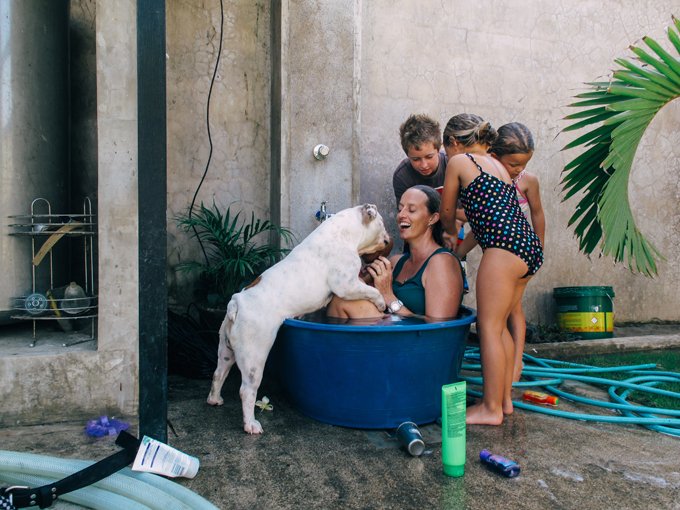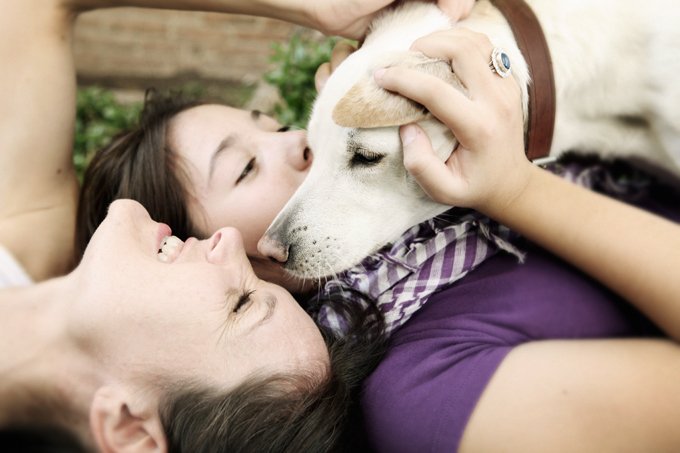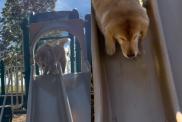For many kids, the family dog is their best friend–a companion who teaches them about friendship, loyalty, responsibility, and empathy as well as providing unconditional love.
If you treat your dog as a beloved member of the family and provide the care and training she deserves, you’re more likely to have a dog who’s gentle, loyal, and loving with both animals and people. A dog will depend on the adults in the family, so the decision to get a dog should be made by adults. Never get a dog to serve as a temporary playmate for kids.
How old should my children be before we get a dog?
You are the best judge of your child’s maturity, but most experts agree that a child should be at least six years old before a dog is brought into the home. If your child has good self-control and understands (and obeys) the word “no,” then consider introducing your kids to a friends’ well-behaved dog so you can observe how your child acts around the dog.
Should we get a puppy or an adult dog?
Many families with small children choose a puppy, thinking that puppies are safer, easier to train, and more adaptable than older, bigger dogs. This isn’t always the case. Puppies are fragile, require lots of care and time, and can play rough by scratching and biting. Adopting a gentle, calm, and friendly older dog with a known history of getting along with small children may be the way to go for your family. Talk with veterinarians, dog trainers, and an animal shelter adoption counselor who can help you select just the right dog for the whole family.

What kind of dog is best with small children?
You want your child to be safe and secure around your dog. You’ll need to know which breeds are the best with children. Keep in mind that all dogs can bite, and a dog’s breed is just one of many factors that shape behavior and temperament. Regardless of the breed, the best dogs for kids will always be the ones who receive proper socialization, positive training, attention, exercise and excellent care.
How should my child interact with a dog?
It’s important that an adult supervise any interaction between a dog and a child, to protect them both. It’s also imperative that you help your kids see the world through your dog’s eyes. When you ask your child how he’d feel if someone pulled his ears or hair, your child will have greater empathy for the dog. Your kids need to know that all dogs, and all animals for that matter, must be treated with caution and respect.
Help your kids understand that:
- A dog needs his or her own space and may not always welcome their attention, especially when resting, playing, or eating.
- Dogs can get upset by too much attention and stimulation. Make sure your kids understand warning signs such as lip curling, growling, and retreating, so they know when their canine friend needs to be left alone.
- Make sure your kids know to get permission from an adult before touching another dog. Explain that some dogs may feel scared when stared at, cornered, or touched. And dogs in pain may lash out or bite anyone who tries to touch them, so teach your child to leave an injured dog alone and to find an adult right away if they come across a hurt dog.
- Teach your kids to approach your dog calmly. Some dogs may react badly when startled or when young kids yell and run. Your child needs to know how to behave appropriately around dogs.
- Teach your kids not to approach dogs who are left alone in a yard or in cars, since they may try to protect their territory.
-

(Picture Credit: Getty Images)
How do I help my dog feel safe?
Dogs need time to adjust to new surroundings and circumstances. Provide your dog with a place of her own where she can retreat from the kids. You never want to put your dog in a situation where she feels threatened.
How can my kids help care for a dog?
Letting your kids care for a dog teaches responsibility and instills a feeling of accomplishment. Make sure you choose tasks that are appropriate for your child’s age. Even young kids can be involved in caring for a dog by helping to select a new toy or collar.
How can I teach my children to take good care of dogs?
Being a good role model is the best way to teach your children how to be responsible caregivers. Even before you get a dog, make sure you have realistic expectations about owning a dog. And then take steps to choose the right dog for your household at the right time.
When you bring a dog into your family, set up and enforce rules regarding her care. For instance, tell your children not to pull the dog’s tail, ears, or other body parts, and insist that they never tease, hit, or chase the dog. Your kids will need to be shown how to properly pick up, hold, and touch the dog.
You can involve your children in training your dog, which teaches your child how to treat dogs humanely and communicate with them effectively, while giving your dog better manners.
Ultimately, your children will learn how to treat all animals by watching you set a good example with your own dog. They’ll see how you feed, pet, and exercise your dog. And they’ll notice how you react when your dog damages the furniture, barks excessively, or has an accident in the house. If your dog has problem behaviors, consult with a trainer who can help you resolve these issues so you can keep the whole family happily together.
Source: Adapted from the Humane Society of the United States









